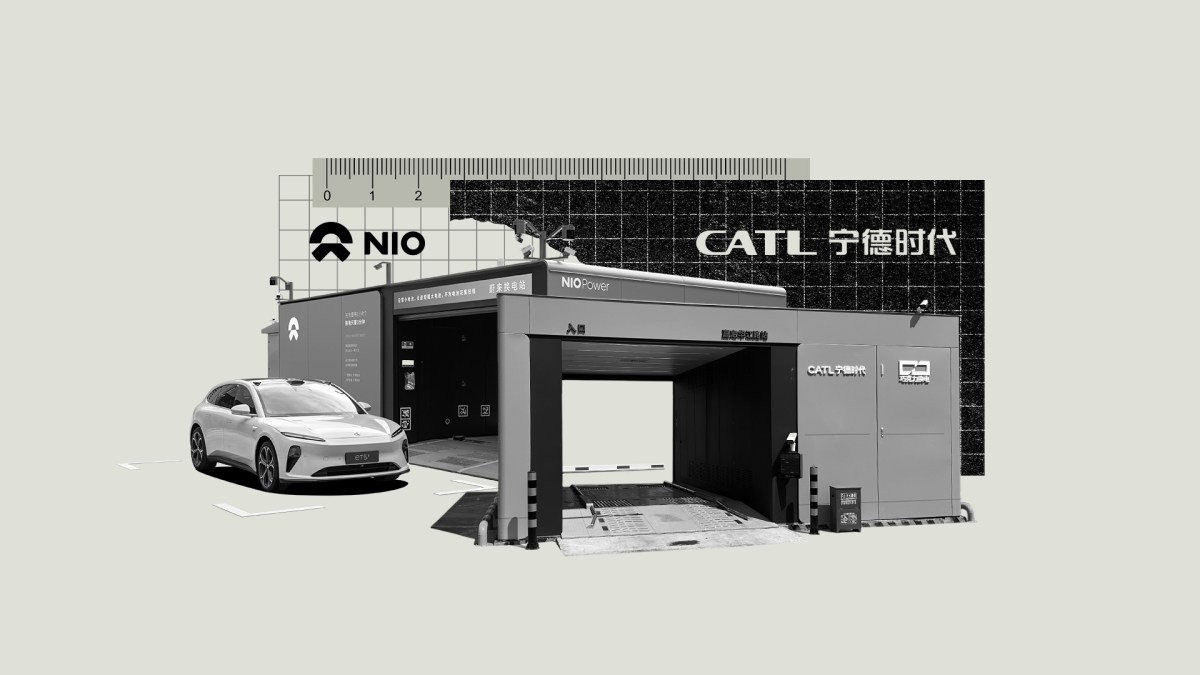CATL, the world’s largest battery manufacturer, is betting heavily on battery swapping as the next frontier in electric vehicle infrastructure, challenging the leadership of carmaker Nio and reviving a concept once dismissed by Tesla.
At a demonstration in Shanghai last week to EV, the Ningde-based group showed how its “Choco Swap” stations can automatically replace a depleted battery in 70–80 seconds, with official specifications targeting a 99.99% success rate.
By contrast, Nio’s latest fourth-generation stations typically take around three minutes to complete a swap.
With its fifth-generation stations set to begin pilot tests in December, the company is expected to shorten swap times further, continuing the pattern seen with each new iteration.
CATL’s strategy relies on standardised, universal battery packs designed to work across different brands and vehicle classes.
Its first two product families — launched last December — include 42 kWh and 56 kWh lithium iron phosphate (LFP) packs, and 52 kWh and 70 kWh nickel-cobalt-manganese (NCM) packs, offering driving ranges from 400 to 600 km.
The packs are modular and can be rented, swapped, or upgraded, enabling car buyers to purchase a vehicle without the battery, lowering upfront costs by as much as a third.
Stations store 14 batteries depending on configuration and are compatible with vehicles with wheelbases from 2.55m to 3.10m — covering compact sedans through to larger mid-sized models.
In upcoming generations, CATL aims to store 30 batteries in each station.
Each facility also integrates charging and is designed to enable battery-to-grid services, allowing energy to be stored and redistributed during off-peak periods.
CATL has already installed more than 500 swap stations across 34 Chinese cities, with 105 added in August alone.
The company is targeting 1,000 by the end of this year, another 2,500 in 2026, and more than 2,000 new stations in 2027, covering more than 100 cities.
By comparison, Nio opened its first station in early 2018 and has since built about 3,500 over seven and a half years.
The battery maker aims to have a network dense enough that stations are available within 3–5 km in urban areas, with each capable of handling 500–700 swaps per day once private vehicles join current taxi-focused operations.
The rollout has been deliberately rapid. CATL says it can select, permit, and construct a new station within one month.
Unlike Nio, which started by building its network around its own vehicles, CATL is working since day one with multiple carmakers to ensure broader compatibility.
The first Choco Swap-ready models are due from 2025, including GAC’s Aion S sedan, Hongqi’s E-QM5, and SAIC’s Roewe D7.
Further vehicles from BAIC, Chang’an, Wuling and SAIC’s Rising brand are expected from 2026.
Nio, which pioneered the technology in China, operates more than 3,500 swap stations in its home market and 61 in Europe, mostly in Germany and Norway.
Its fifth-generation stations, due in 2026, will raise storage capacity beyond the current 23 batteries per site.
But its European expansion has slowed: earlier this year, Nio Power’s team on the continent was cut to just five staff, delaying further deployment.
The company has deepened its ties with CATL, agreeing in March to accept a 2.5 billion yuan ($345 million) investment from the battery group into Nio Power.
Both firms also back Weilan, a battery start-up whose registered capital tripled in May, as part of joint R&D.
CATL has indicated it will eventually bring the system to Europe, but executives last week said the focus remains on China for now, citing “lots of challenges” overseas.
Vice-president Jiang Li told the Financial Times earlier this year that the business model could be “copied” abroad once domestic deployment is mature.
The company’s relationships with Ford, Tesla, BMW, Volkswagen and Stellantis — all current CATL battery customers — could provide a pathway.
Stellantis, which is building a €4.1 billion battery plant with CATL in Spain, has already begun trialling swappable-battery Fiat 500e cars in Madrid via its Free2move mobility service, using technology from California start-up Ample.
For CATL, battery swapping offers both a hedge against slowing growth in EV battery demand and a chance to move into consumer-facing infrastructure.
If successful, the company could force rivals — including Nio — to adapt, and reshape how drivers power their vehicles in the world’s largest electric car market.


